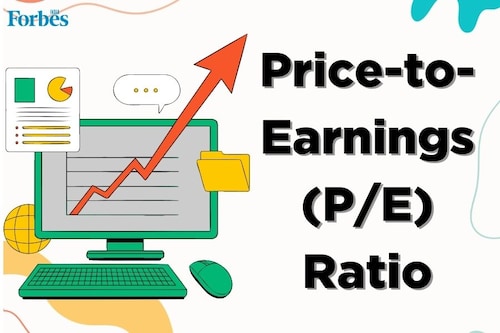What is the price-to earnings (P/E) ratio
Looking for a clear explanation of the P/E ratio? Discover its meaning and importance in investment analysis with our comprehensive guide


The Price-to-Earnings (P/E Ratio) is a critical financial metric that investors use to evaluate a company"s value. It provides a snapshot of what the market will pay for a company"s earnings.
In this comprehensive guide, we"ll delve into the intricacies of the P/E Ratio, including how to calculate it, the difference between trailing and forward P/E, and the concept of absolute vs relative P/E.
To ascertain the value of a company, one can determine its P/E Ratio by dividing its current share price by its earnings per share (EPS). This helps investors understand how the company"s share price compares to its earnings. Investors often use the P/E Ratio to compare the value of different companies within the same industry. If a company has a high P/E Ratio, it could mean that its stock is overvalued or that investors are anticipating high growth rates in the future.
The P/E Ratio is a vital indicator of a company"s financial position. It provides a fast way to determine if a stock is overvalued or undervalued. The P/E Ratio can vary significantly between different sectors and industries. For instance, growth sectors like technology often have higher P/E Ratios than more stable sectors like utilities.
Calculating the PE Ratio is pretty straightforward:
Now that we know what the PE ratio is, let’s take a look at the distinctions of trailing P/E vs forward P/E:
Trailing P/E is a valuation metric that uses the earnings per share (EPS) from the last 12 months. It is based on past performance and is calculated using actual earnings. This provides a snapshot of a company"s P/E Ratio based on its earnings over the past year.
Trailing P/E is often used by investors as it is based on actual, historical data.
It provides a clear picture of how a company has performed.
On the other hand, forward P/E uses projected earnings for the next 12 months. It is based on future expectations and uses estimated earnings. This provides a projection of a company"s P/E Ratio based on its expected earnings over the next year.
The forward P/E is useful for predicting a company"s future performance.
It considers a company"s expected growth rate, which can be particularly useful for high-growth companies.
Both P/E Ratios can provide valuable insights for instance, a company with a high trailing P/E but a low forward P/E may be expected to have strong earnings growth in the future.
If a company"s stock is priced at $50 per share and has an EPS of $5, the P/E Ratio would be 10 ($50/$5).
Investors value a company"s earnings by calculating the P/E Ratio, which is the amount they are willing to pay for every $1 earned. A P/E Ratio higher than ten may indicate that the stock is overpriced, while a P/E Ratio lower than ten may indicate that the stock is undervalued.
While the P/E Ratio is crucial when assessing a stock, investors should also consider other key factors, such as the company"s growth potential, financial stability, and industry standing. Considering these factors and the P/E Ratio for a comprehensive evaluation is essential.
The P/E Ratio can be viewed in absolute or relative terms. Absolute P/E refers to the P/E Ratio without any context. Relative P/E, on the other hand, compares the P/E Ratio of one company to another or the industry average.
Absolute P/E can be misleading as it doesn"t consider the industry average or the company"s growth prospects. For instance, a company with a high absolute P/E might seem overvalued, but it might be fairly valued if the entire industry has high P/E Ratios.
Relative P/E provides a better picture as it compares the company"s P/E Ratio to its competitors or the industry average. A company with a high relative P/E may be overvalued compared to its peers, while a company with a low relative P/E may be undervalued.
1. What does a high PE Ratio mean?
A high P/E Ratio could suggest that a company"s stock is overvalued, or it could indicate that investors are expecting high growth rates in the future.
2. How can the PE Ratio be used to compare companies?
Investors can use the P/E Ratio to compare the values of different companies. By analysing the P/E Ratios of various companies, they can determine which ones are overvalued or undervalued.
3. What is a good P/E ratio in India?
There is no fixed number for a good P/E ratio, but most investors consider a lower P/E to be better. However, the P/E ratios are usually considered comparatively by investors, so a good P/E ratio for you would depend on your investment outlook and what you’re comparing the ratio against.
First Published: Aug 02, 2023, 18:00
Subscribe Now